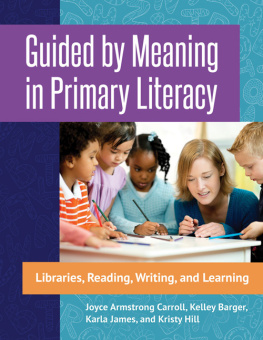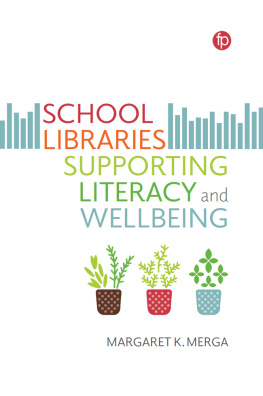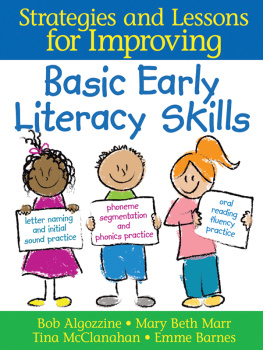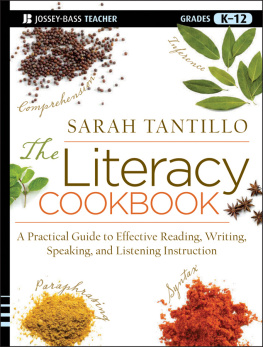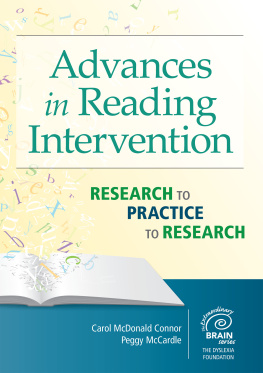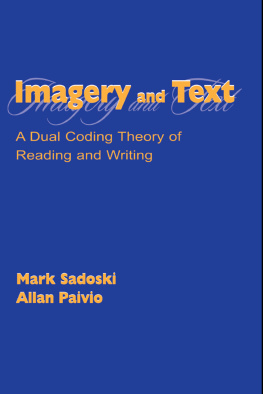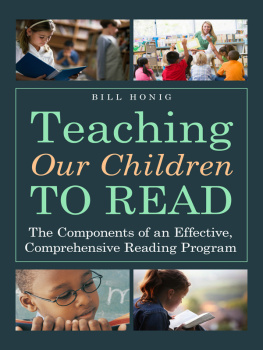T HE C HEN Y ET -S EN F AMILY F OUNDATION L IMITED
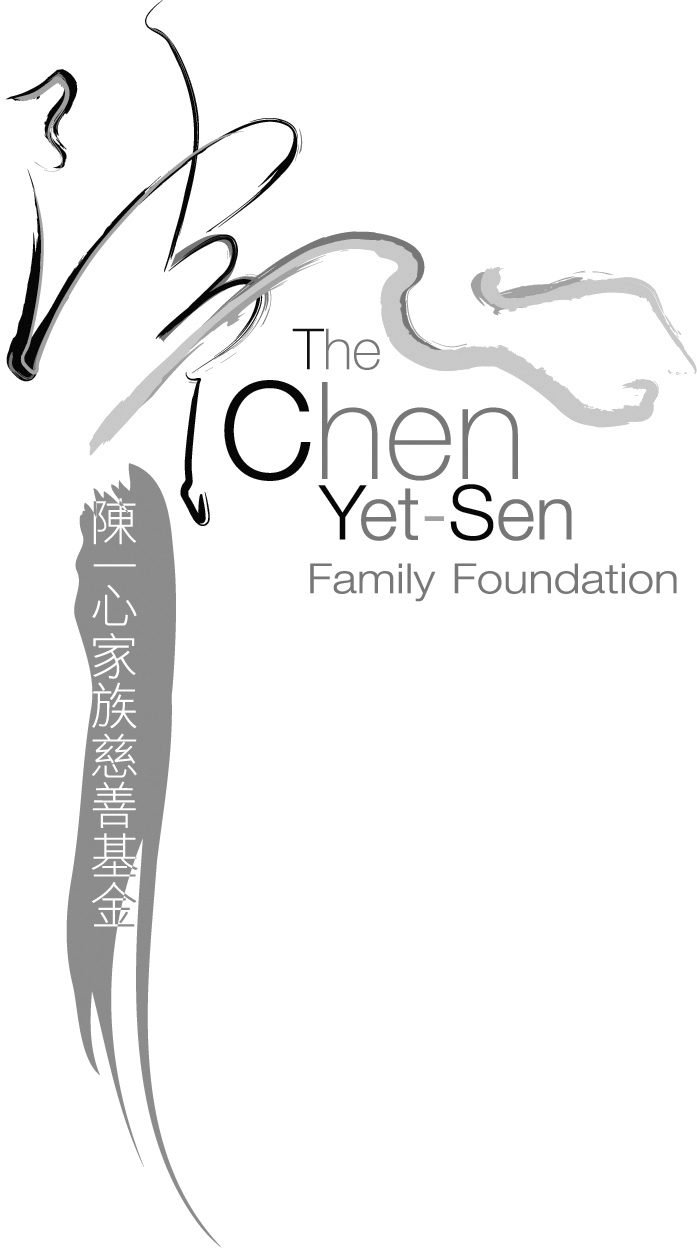
The Chen Yet-Sen Family Foundation Limited is pleased to present this comprehensive exploration of research into language acquisition and literacy development, written by Stephen D. Krashen, Christy Lao, and Sy-Ying Lee.
Krashen, Lao, and Lee have been consultants for the Foundation since 2012, and their research in the promotion of reading, literacy, and language acquisition has hugely influenced our practices. We are very grateful and honored to be working with such dedicated and talented individuals.
This book includes key lessons learned from decades of research, and it is our hope that parents, educators, principals, and academics will take valuable lessons from the evidence presented here, using it to develop their language and reading programs, and ultimately leading to more effective, enjoyable learning for the next generation.
Comprehensible and Compelling
The Causes and Effects of Free Voluntary Reading
Stephen D. Krashen, Sy-Ying Lee, and Christy Lao

Copyright 2018 by The Chen Yet-Sen Family Foundation
All rights reserved. No part of this publication may be reproduced, stored in a retrieval system, or transmitted, in any form or by any means, electronic, mechanical, photocopying, recording, or otherwise, except for the inclusion of brief quotations in a review, without prior permission in writing from the publisher.
Library of Congress Cataloging-in-Publication Data
Names: Krashen, Stephen D., author. | Lee, Syying, author. | Lao, Christy, author.
Title: Comprehensible and compelling : the causes and effects of free voluntary reading / Stephen D. Krashen, Syying Lee, and Christy Lao.
Description: Santa Barbara, California : Libraries Unlimited, an imprint of ABC-CLIO, LLC, [2018] | Includes bibliographical references and index.
Identifiers: LCCN 2017028564 (print) | LCCN 2017048241 (ebook) | ISBN 9781440857997 (ebook) | ISBN 9781440857980 (hardcover acid-free paper)
Subjects: LCSH: Language and languagesStudy and teaching. | Reading. | Language and languagesSelf-instruction. | Language and languagesStudy and teachingBilingual method. | Language and languagesStudy and teachingOrthography and spelling.
Classification: LCC P53.75 (ebook) | LCC P53.75 .K73 2018 (print) | DDC 418/.4dc23
LC record available at https://lccn.loc.gov/2017028564
ISBN: 978-1-4408-5798-0
EISBN: 978-1-4408-5799-7
22 21 20 19 18 1 2 3 4 5
This book is also available as an eBook.
Libraries Unlimited
An Imprint of ABC-CLIO, LLC
ABC-CLIO, LLC
130 Cremona Drive, P.O. Box 1911
Santa Barbara, California 93116-1911
www.abc-clio.com
This book is printed on acid-free paper 
Manufactured in the United States of America
Contents
Introduction
The goal of this book is to present the fundamentals of literacy development. The book has seven chapters, but those who dont have the time to read them all need only finish reading the first three paragraphs of this introduction: we acquire both language (first and second) and literacy when we understand what we hear and read, and this happens best when what we hear and what we read is very interesting, or compelling.
This happens when children (and older folks) hear interesting stories, when they get lost in good books, and when they read to become informed about topics about which they are very interested.
This principle, we suggest, underlies successful literacy programs of all kinds. And now the details:
Chapter 1: Compelling Comprehensible Input
We acquire language when we understand what we hear or read, but acquisition happens best when the input is highly interesting, or compelling. When input is compelling, all anxiety disappears, and there is no need for motivation: language acquisition and literacy development occur without the acquirer realizing it.
Chapter 2: The Three Stages
There are three stages in the development of the highest level of literacy, sometimes called academic literacy: (1) hearing stories, (2) self-selected recreational reading, and (3) specialized reading in an area of deep personal interest.
In each stage, the input is compelling. In stages 2 and 3, the reading is narrow: stage 2 readers typically follow favorite authors and genres, and stage 3 readers read because they are seeking knowledge of importance to them.
Chapter 3: What Read-Alouds Do and What They Dont Do
This chapter deals with stage 1 of the three stages on the path to the highest levels of literacy (see ). It reviews the research on read-alouds, concluding that read-alouds promote vocabulary and grammar development, and thus promote listening comprehension ability.
Read-alouds also stimulate an interest in books and reading. Studies also show that the language and content of story books can be far richer and more interesting than that found in textbooks.
Some reading experts claim that readers should direct childrens attention to the details of the print while reading, in order to help them develop more print awareness and accelerate reading development. Close inspection of the research, however, reveals that interrupting reading produces only small gains in print awareness and may interfere with the pleasure associated with hearing a story.
Chapter 4: Self-Selected Reading
Self-selected reading, stage 2 of the path to the highest levels of literacy (), is often light reading. Extensive evidence shows, however, that self-selected reading results in substantial development of reading ability, writing ability, vocabulary, and grammar. Self-selected reading provides the bridge to academic or specialized literacy: those who have done self-selected reading find demanding texts far more comprehensible than those who have not.
Chapter 5: Will They Only Read Junk?
addresses this question: Will children, given the chance to read what they want to read, avoid good books and only read junk? Our research says this is not so: graduates of Stone Soup programs in Hefei, Anhui Province, China, who were encouraged to select their own reading showed somewhat more enthusiasm for reading novels, were equally enthusiastic about reading poetry, and in general were slightly more enthusiastic about reading than comparison students.
Chapter 6: The Complexity Study: Do They Read Only Easy Books?
This chapter addresses a related question to that of : Will children, allowed time for free reading, stay with easy books and avoid more challenging reading? Our research, again from Hefei, demonstrates that this does not happen. Judgments of book selections both by teachers and by a group of sixth-grade children revealed that as students mature, they choose more demanding books.
Chapter 7: What Have We Learned from PIRLS?
The PIRLS (Progress in International Reading Literacy) exam is a reading test given to 10-year-olds in over 40 countries (see http://www.iea.nl/). Whenever results from the PIRLS examination are published in newspapers, all but the top one or two countries declare a literacy crisis and demand that schools include more study of the fundamentals of reading.
Our goal in this chapter is to determine why some countries (or cities) do better than others. Based on analyses of the PIRLS test from 2006 and 2011, we conclude that the major factors predicting reading scores are poverty (negative) and the availability, and access to, school libraries (positive). This result is consistent with the research reviewed in .
Next page

